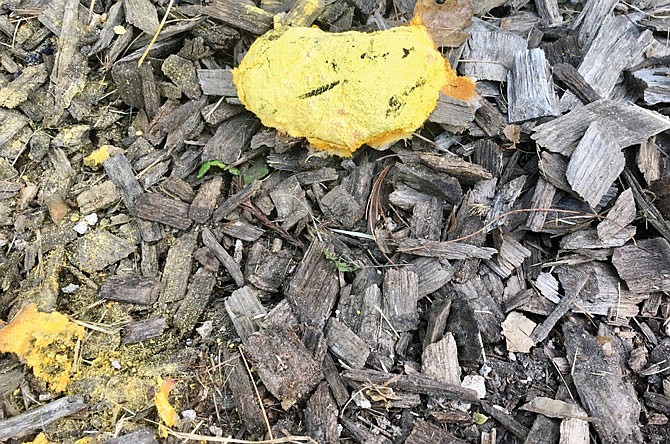Spring showers bring flowers, but warm rains can also lead to something much more unsightly - dog vomit slime mold.
The last days of June and first of July have been marked by warm weather and drizzling rain, the perfect combination for the spongy yellow slime mold, known by scientists as Fuligo septica and to many others as dog vomit slime mold or scrambled egg slime mold.
The "scrambled egg" descriptor is most accurate early in the slime mold's life cycle, when it appears yellow and foamy. As it develops and dries out, the color will darken - at this point the "dog vomit" name makes a bit more sense.
Eventually, the slime mold becomes a mass of dusty spores.
The species often creeps along 1 millimeter per hour on mulch in gardens and yarns after heavy rain or excessive watering, "eating" bacteria, yeasts and fungi.
Though referred to as molds, slime molds aren't fungi. Instead, they're formed of thousands of tiny amoeba-like organisms joining together to find food and reproduce. The species plays an important role in the ecosystem, breaking down materials and returning nutrients to the soil.
Because water helps spread it, it is almost impossible for gardeners to get rid of. Fortunately, the harmless slime mold doesn't cause any known sickness in humans. In fact, they can even be kept as pets - place a portion of slime mold in a jar with a damp paper towel and a few pieces of dry oatmeal, and watch it ooze around seeking sustenance.
Heavy summer rains can also trigger the emergence of chanterelle mushrooms, bright orange and yellow, funnel-shaped mushrooms with wavy cap edges.
This edible mushroom can be found in grass or leaf litter between May and October.

